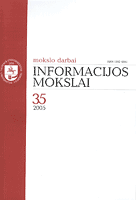Advocacy Democracy Modes: Benefits and Limitations
Advocacy Democracy Modes: Benefits and Limitations
Author(s): Marina SokolovaSubject(s): Economy
Published by: Vilniaus Universiteto Leidykla
Summary/Abstract: More and more often citizens and citizen groups directly interact with government, participate in the process of policy, although formation or administration, the actual and final decisions remain in the hands of government elites. Since these practices differ from representative and direct democracy mechanisms, some theorists argue that we witness emergence of a new “advocacy democracy”. At the same time, however, advocacy democracy may exacerbate political inequality because of the inequality of usage: some citizens are empowered to become more involved in the democratic process, but other citizens who do not possess the skills or resources to compete in these new domains are left behind. In this context it is important to analyze three major modes of advocacy democracy – associations, multistakeholder partnerships and direct citizens’ participation in the deliberative process, and to check them against the degree of citizen influence and citizen empowerment, as well as to discuss their benefits and limitations. The suggested analysis shows that all three participation modes should be considered as complimentary to each other. But when more common interests are threatened by the ecology of special interests or when accountability inducing reforms are unworkable, enhancing legitimacy, justice, or effectiveness may require circumventing the political grip of associations or major stakeholders by shifting the locus of decision-making to alternative participatory arrangements, such as direct citizens participation in deliberative process.
Journal: Informacijos mokslai
- Issue Year: 2006
- Issue No: 37
- Page Range: 110-121
- Page Count: 12

